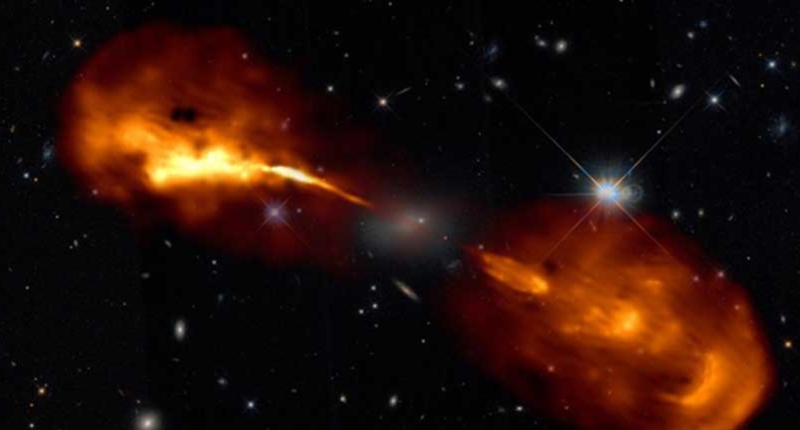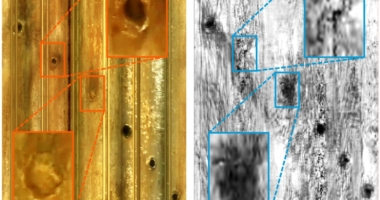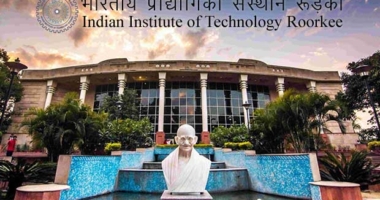Israel, France, Brazil, and South Korea are making remarkable advancements in the aerospace sector. Israel has achieved notable technological advances with the construction of small satellites, lunar oxygen production, advanced sensors, and Hall thrusters. France is investing in constructing the internet via satellite with Thales, Qualcomm, and Ericsson, planning to connect smartphones directly to satellite communications over the next five years. The European Space Agency has received a 17% increase in its budget to continue its programmes on Ariane 6 and Vega launchers while supporting moon and Mars probes. Meanwhile, Brazil is focusing on earth observation, communication, and meteorology through its space research, and the country’s space activities remain a top priority in its development agenda. South Korea has successfully launched its domestically produced Nuri rocket to restart its space programme, proposing five main tasks relating to the development of the space industry. However, some South Korean academic circles question whether the state’s talent pool, budget, and technical level in the aerospace sector can support the effort to land on the Moon in 2032 and Mars in 2045.
New Discoveries and Advances in Space Research
In this article, we will look at new discoveries and advances in space research from various countries such as Japan, Israel, South Korea, and the BRICS countries. For the first time, the Hayabusa 2 probe of the Japan Aerospace Exploration Agency’s (JAXA) has brought back gas from asteroid 162173 Ryugu.
Hayabusa 2 Brings Back Gas from Asteroid Ryugu
The Hayabusa 2 probe, launched on 3 December, successfully reached asteroid 162173 Ryugu in June 2018. After a year and a half of measurements and surveys, the probe collected samples from the asteroid’s surface and brought them back to Earth on 6 December 2020. Scientists detected more than twenty amino acids in the samples, marking the first time amino acids have been discovered outside of Earth. This discovery has significant implications for understanding the origins of life on Earth and how vital organic molecules arrived on our planet. The analysis of the samples also revealed that water on Earth may have been brought by asteroids from the outer edge of the solar system.
Meteorites May Have Brought Essential Compounds to Earth
Scientists at Hokkaido University discovered that pyrimidine nitrogen bases, which make up DNA and RNA, may have been brought to Earth by carbon-rich meteorites. The research team analyzed three meteorites and found pyrimidine bases such as cytosine and thymine for the first time in concentrations of parts per billion. These compounds can be produced by a photochemical reaction and transported to Earth via meteorites, which may have played a crucial role in the genetic function of the first manifestations of life on our planet.
These new discoveries and advances in space research continue to unravel the mysteries of the origins of life on Earth and the evolution of the solar system.
Brazil and China’s Aerospace Cooperation and International Partnership
Brazil is the only country in the Southern hemisphere that masters aerospace technology, with satellites, rockets, vehicles, and launch sites. The Brazilian government has prioritized space activities for its development agenda. The Agência Espacial Brasileira focuses mainly on Earth observation, communication, and meteorology, while strengthening the construction of infrastructure and the training of human resources for space research.
Brazil-China Aerospace Cooperation
The aerospace departments of China and Brazil actively implement the Cooperation Plan 2013-2022 of the National Space Administration of China and the Brazilian Space Agency. They continue to expand into satellite exploration, manned spaceflight, and deepening studies in the field. Plans are underway to build a new cooperation platform in the areas of space technology, applications, science, ground equipment, personnel training, measurement and control support, and launch services.
The China-Brazil Space Weather Joint Laboratory and the Universidade Federal do Recôncavo da Bahia established a new cooperation in April 2022. They jointly established tools and equipment for scientific research and implemented data sharing. The collaboration succeeded in bringing the remote city of Santarém onto the map of an international sensor network for space meteorology research. It is also the latest tool in the South American magnetometer network shared between the Chinese Meridian Project and the Estudo e Monitoramento Brasileiro do Clima Espacial (EMBRACE).
BRICS Joint Space Cooperation Committee
On 25 May 2022, the BRICS countries established the Joint Space Cooperation Committee, which officially opened the joint observation and data sharing of the “constellation” of remote-sensing satellites of these States. The “constellation” consists of six existing satellites from the BRICS countries. The creation of a virtual “constellation” of remote-sensing satellites between the space agencies of the BRICS countries and the establishment of a data-sharing mechanism will help address challenges such as global climate change, major disasters, and environmental protection, according to Carlos Moura, director of the Agência Espacial Brasileira.
These collaborations and international partnerships in the aerospace industry will help advance space research and address important global issues, bringing benefits to people and the planet.
Israel’s Advancements in Private Aerospace Industry and Lunar Exploration
In Israel, the promotion of lunar satellite exploration and private aerospace innovation has led to remarkable advancements. In 2022, Israel increased its support for the private aerospace industry, granting six million dollars to eleven private aerospace companies for the development of new space technologies. These companies cover various technical fields such as the Internet of Things (IoT), which involves bringing the objects of our everyday lives into the digital world.
Advancements in Small Satellites and Satellite Imagery
Israel is also developing the construction of small satellites, new materials, lunar oxygen production, advanced sensors, and Hall thrusters. Last year, the Israeli defense company Rafael launched a “constellation” of high-resolution, high-revision satellites with an image resolution of less than 30 cm. Additionally, the Israeli Ministry of Defence’s Ofek satellite program won the Israel Defence Award in 2022. In 2020, Israel launched the Ofek-16 satellite, which is the program’s third-generation satellite weighing approximately 300-400 kilograms and has an orbital altitude of 600 kilometers. All Ofek satellites are launched by the Shavit carrier rocket from the Palmachim air base in Israel, on the Mediterranean coast.
Lunar Exploration and Research
The Israeli non-profit aerospace organization SpaceIL is preparing to launch the country’s second lunar probe in 2024 or 2025. The plan will carry multiple lunar experimental devices, including one to test the stability of drugs on the moon. In October 2022, the Ben-Gurion University of Negev and the Queensland Academy for Science, Mathematics, and Technology (QASMT) announced that they would use a probe to conduct tests on plant growth on the Moon.
Over the next five years, the Israel Innovation Authority plans to fund USD 180 million to continue supporting the development of the private aerospace industry. These advancements in space technology and lunar exploration demonstrate Israel’s commitment to innovation and progress in the aerospace industry, leading to a brighter future for space research and exploration.
France, Thales, Qualcomm and Ericsson Plan to Build 5G Satellite Network
French company Thales, along with US company Qualcomm and Swedish group Ericsson, have announced plans to connect smartphones directly to satellite communications via small groups of satellites in orbit around the Earth over the next five years. This would provide 5G coverage in areas that aren’t covered by terrestrial antennas, which would offer a service between satellite phone systems and satellite Internet providers like Starlink. The project is expected to cost eight billion euros, with Thales building the satellites, Qualcomm supplying the smartphones and Ericsson installing the terrestrial core network.
France and EU Invest Billions in Space Industry
France announced it will invest over nine billion euros in space from 2023 to 2025, while the European Space Agency (ESA) plans to invest EUR 16.9 billion over the following three years. The new funding allows the continuation of the European programmes on Ariane 6 and Vega launchers and enables Europe to participate in global competition for small launchers. The EU will also provide support for Moon and Mars probes, expanding cooperation with the United States of America in Moon and Mars exploration.
South Korea’s Successful Launch of Nuri Rocket
South Korea’s second test launch of the domestically produced Nuri rocket was successful, placing several satellites into orbit on Tuesday. A 162.5 kg satellite designed to test the rocket’s performance made contact with a base station in Antarctica after entering orbit. This marks an important step in the efforts to restart its space programme after the failure of an initial test in 2021.
South Korea’s Fourth Basic Plan for Space Development
On 30 November 2021, the South Korean government released its fourth basic plan for space development, which proposes five main tasks relating to the development of the space industry. These include expanding the scope of space exploration, sending manned spacecraft, developing the South Korean space industry, overseeing and supervising space security issues, and conducting space-related research.
France and the EU’s investment in space exploration will be crucial for advancing technological innovation and expanding our understanding of the universe. South Korea’s successful launch of the Nuri rocket marks an important milestone in its space programme, while the country’s ambitious basic plan for space development will help it to establish itself as a major player in the space industry. Thales, Qualcomm and Ericsson’s 5G satellite network project will also provide an important service, expanding 5G coverage to areas not covered by terrestrial antennas.
South Korean President Yoon Suk-yeol has announced that South Korea plans to land on the Moon in 2032 and on Mars in 2045. However, some South Korean academics have raised doubts about the country’s ability to achieve these ambitious goals, given its limited talent pool, budget, and technical capabilities in the aerospace sector.
Don’t miss interesting posts on Famousbio









